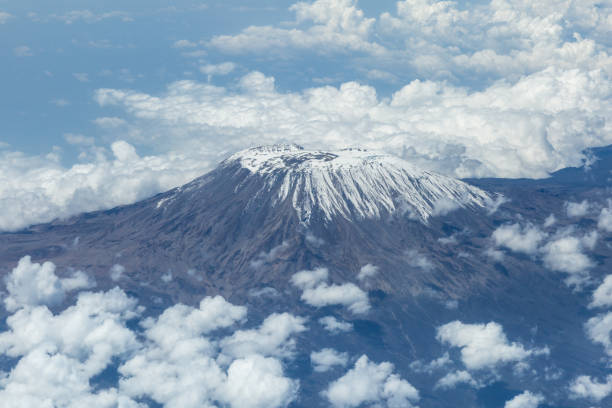Mount Kilimanjaro - Machame Route
Safari at a Glance
Mount Kilimanjaro - Machame Route
The Machame route on Kilimanjaro is a seven-day camping route that allows for excellent acclimatization and particularly diverse scenery. It has been called the Whiskey route in the past, and nowadays, about 35% of all climbers on the mountain use it.
In a matter of days, you will climb Kilimanjaro from the equator up to an Arctic zone, moving through grasslands, tropical rainforests, alpine meadows, moorlands, and high deserts to snow and ice. Each day on this route presents quite a distinct ecosystem to experience, which is one reason it is so popular.
The other reason is that the seven-day program begins on the southwest side of the mountain and traverses around to the southeast side, enabling you to sleep at the same altitude for three consecutive nights, which significantly aids altitude acclimatization. This means that our summit success rate on this route is quite high, at around 85%.
We only run seven-day trips on Kilimanjaro, which is the recommended minimum number of days by all the international mountain associations, such as the UIAA (International Climbing and Mountaineering Federation), plus our assessment of mountain safety. The Machame route could bed one in six days by missing out on Karanga Valley and going straight to Barafu, but experience tells us that this leads to increased sickness and a much lower summit success rate.
From the start, you will be speaking with experienced people who have climbed Kilimanjaro many times, including Gavin Bate, who has been leading groups on the mountain regularly since 1994 and is always on hand for advice. We can give you an honest appraisal of the climb, about training for the mountain, and what clothing and equipment you will need to buy or rent. This personal service extends to our staff in Tanzania, where a Tanzaniaco-ordinator will meet you and give a team briefing along with our guides.
How Long is the Machame Route?
The entire climb up and down is approximately 62 km/ 37 miles from gate to gate. The height gain from the gate to the summit is 4157 metres, which is ascended over six days of around 5- 7days of walking each day.
What is the Altitude Profile of the Machame Route?
The seven-day route on Machameallows for a first night at 3000m, then the following three nights at around 3900m, and then the final camp at 4600m at midnight on day 6. Summit day involves ascending 1385m to Uhuru Peak and then descending all the way down to 3800m. Day 7 is then a descent through the forest to the gate.
Day Start Level Daily High Point Sleep Level Camp name
Day One 1830m 3000m 3000m Machame
Day Two 3000m 3850m 3850m Shira
Day Three 3850m 4560m 3950m Barranco
Day Four 3950m 4200m 3950m Karanga
Day Five 3950m 4600m 4600m Barafu
Day Six 4600m 5985m 3800m Millennium
Day Seven 3800m 3800m 1830m
What are the Camps in Machame Route?
The camps for the seven-day Machame route are Machame, Shira, Barranco, Karanga Valley, Barafu, and Millennium (or sometimes Mweka). A full description of each camp is below.
Machame and Millennium Camp are on the tree line and have a number of campsites set in small clearings in the forest. The whole site can accommodate probably a hundred tents. You will see a central ranger station, a number of brick toilets, and long drop latrines. The air is quite humid, and it's not too cold; being right in the trees, you won't see lots of other people around the site.
Shira Camp is situated on the vast Shira plateau, which is a volcanic spill-off from the last explosion some 100,000 years ago. Open and exposed and often dusty with smaller, you will find more fragile plants among the rocks. Brick toilets, restrooms, and Ranger huts are around, and the area is so huge that it is easy to spread out and have some privacy. Shira could accommodate hundreds of tents fairly easily but expect it to be colder here and potentially windier. The views of the summit massif are really amazing, especially at dawn and dusk, and it's worth getting up in the night if there is a full moon to see it rise behind the summit.
Barranco Camp is at the head of the steep valley, which drops down into the Umbwe route and goes all the way down to Moshi. Tucked up underneath the summit massif, there are huge dramatic cliffs to see, some remains of hanging glaciers, and often, the whole of Kibowill be plastered in snow. Meanwhile, looking down the valley, you can see the lights of Moshi. The campsite has brick toilets and latrines (long drops), a Ranger's hut of course, and there is a lot of plant life here so it's green and verdant, especially the giant groundsels which can grow several metres tall. The camp can take over a hundred tents quite easily, but space is limited, so you can sometimes expect to walk a distance to find your tent.
Karanga Camp is very open and situated somewhat on a slope, so make sure your tent is on a flat piece of ground. There are great views of the summit massif again, and you can see the route to the summit quite easily. Looking downhill, you can see Moshi's lights. Brick toilets and pit latrines again, a Rangers Hut, and space for at least a hundred tents. It can be cold and windy here, and the clouds can come and go very fast. Water is a problem at this camp, and the porters have to walk forty minutes back down the trail to the nearest stream.
Many people go directly from Barranco to the next camp, Barafu, in one day in order to climb Kilimanjaro in six days, so Karanga is a halfway stop. Still, it's well worth the additional acclimatization.
Barafu, meaning 'ice' in Swahili, is the final camp at 4600m. It is no longer covered in permanent snow, but it is cold, rocky, and exposed. People definitely feel the altitude here, and you can expect snow and often wind. The campsites are dotted among nooks and crannies in the rocks, running the length of the ridge. Some camps are far below the Rangers hut, and the start of the summit climb so that it can add more than half an hour to the ascent. With brick toilets and restrooms, the facilities are now good, but water is in short supply, so the porters are forced to travel back downhill to the nearest stream. The Rangers here have large, heavy-duty stretchers at hand with a single wheel underneath, so it's possible to get people down quickly. There is also a helipad at the camp.
What Clothing do you need for Climbing Mount Kilimanjaro?
You can read the full packing list for Kilimanjaro, and you can also hire a lot of the items through this website when you book. We can also obtain items for you in-country when you arrive. There is more information on this blog about what to wear on Kilimanjaro, something to prepare for a trip to Kilimanjaro, and more advice on kit for Kilimanjaro and Mount Meru.
A day pack of about 40 litres is perfect for carrying on the Machame route, and each day will be a little bit different in terms of what goes inside it. Water bottles, rain gear, a few spare clothes, gloves and hat, sunscreen and snacks, and camera equipment are all usual things to carry. The weight of your day pack should not be more than about 5-6 kgs; as you go higher, the weight will seem heavier and harder to carry. Meanwhile, the porters will carry your main duffle bag.
You may want an umbrella for showers and to keep off the sun on a still day. Trekking poles are also useful, but you don't need to use them all the time. A flask for hot drinks is very useful on summit night, as is a headtorch. Also, you should have a rucksack cover or even a poncho to cover yourself and your bag. Some people bring mini spikes to put on their boots for summit night when it can be very slippy, but this is optional.
Where You Will Visit
This safari explores the following regions in Tanzania
- Mt. Kilimanjaro
What to do in this one day tour
- Day 1
is the arrival in Tanzania as advertised on the booking page (or your
custom dates)
- Day 2
is for resting, hydrating, and briefing, with time to pick up rental items
and buy any snacks in town.
- Days 3
to 9 is the climb period (arriving back in the hotel by mid-afternoon). If
we break these seven days down:
3. Moshi to Machame Gate and hike to Machame Camp
4. Machame Camp to Shira Camp
5. Shira Camp to Barranco Camp
6. Barranco Camp to Karanga Valley Camp
7. Karanga Valley Camp to Barafu Camp
8. Barafu Camp to Uhuru Peak and descend via Barafu down to Millennium Camp or Mweka Camp
9. Descend to Mweka Gate and transfer back to the hotel. - Day 10
is the departure day.
Tour package includes:
Tour package excludes:





